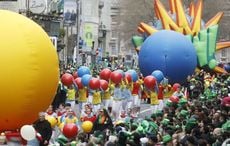A California college is carrying out ultrasound tests on the tongues of Irish speakers in a $260,000 project funded by US government to help preserve the spoken language.
The ultrasounds are being carried out on native speakers to better test how vowel and consonant sounds are made and to preserve them for future generations.
The project is called "Collaborative Research: An Ultrasound Investigation of Irish Palatalization.”
The image of a flickering tongue will help preserve Irish, according to UC Santa Cruz researchers.
Two linguistics professors, Jaye Padgett and Grant McGuire, were given a $260,000 National Science Foundation grant to monitor Irish language tongue movement.
"What's happening to Irish is happening to many languages all over the world," Padgett old the Santa Cruz Sentinel.
"Linguists estimate that about half of the world's languages are going to be gone within 100 years."
Irish language has two different consonant sounds said McGuire.
"It can be very subtle," McGuire said. "We have one kind of similar contrast in English, where the 'l' sound in a word like leaf is different from the "l" sound in feel, where the "l" in feel has a 'w-ish' quality."
Padgett and McGuire linked with then-UCSC doctorate student Ryan Bennett and Irish linguist Máire Ní Chiosián. They studied 15 native Irish speakers and had them read a script in Irish.
They used a portable ultrasound machine attached to a helmet, which showed how sounds were made.
"We can look at the position of the tongue in the mouth — what the front, the back and center of the tongue are doing — and see how that changes," said McGuire.
This project is the first use of ultrasound to study Irish, he said. The new grant money will allow them to expand their research and double staff.
"We're still at the stage where we're just learning about what it looks like in there when you make certain kinds of consonants," Padgett said. "It may seem strange that since the mouth is right there for all of us and we speak all the time, but it can be hard to see what's actually going on."




Comments